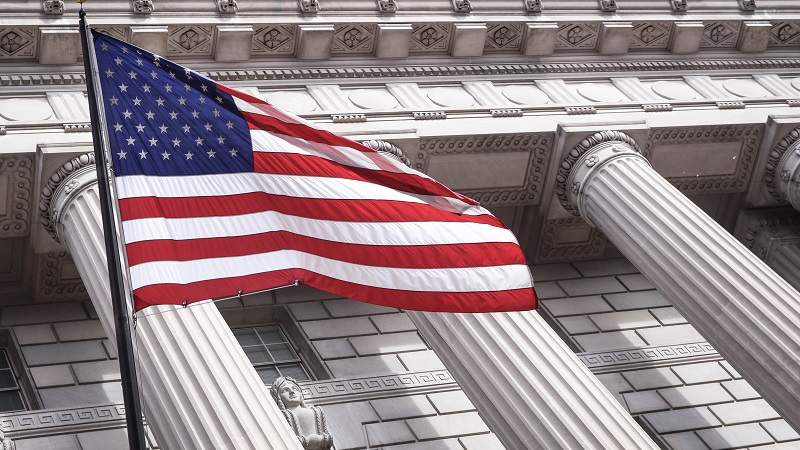The US Federal Reserve has finally raised rates. It’s the first time since 2018, had been well-signalled and, for the most part, factored into markets. If anything, markets had been expecting worse, as they responded positively to the news.
Certainly, the rate rise had been widely expected. The prevailing interest rate climate had started to look wildly out of step with economic growth forecasts and rising inflation. Russell Silberston, strategist at Ninety One, says: “With inflation just shy of 8% and unemployment sub 4%, US monetary policy is in utterly the wrong place, with rates still pegged at zero and quantitative easing only just finished. No surprise, therefore, that the Federal Reserve was unanimously expected to start hiking interest rates and get policy back toward a neutral setting as soon as possible.”
Nevertheless, the Ukraine situation had introduced an element of doubt. Policymakers faced a Hobson’s choice: raise rates in the face of a cost of living crisis, about to be made worse by rising global energy and agricultural prices, or risk inflation becoming ‘untethered’ and increasingly difficult to control. Some had thought that the Federal Reserve may slow down, or at least temper expectations of future rises.
As it was, the Federal Open Market Committee were all in agreement, except for one dissenter who argued for a larger 0.5% rise. Although some commentators viewed it as a more hawkish stance from the Federal Reserve, that’s not how it was interpreted by markets. More interest rate sensitive sectors such as technology responded positively to the news, suggesting that many investors had expected worse.
Take a lot for central banks to deviate from their current path
Policymakers are nevertheless treading a fine line. Kevin Thozet, a member of the investment committee at Carmignac says: “The Fed is – as other central banks – facing the stagflation dilemma, the US job market is particularly strong and the American economy is less exposed to the consequences of the Russian-Ukrainian conflict than the rest of the developed world. However, it will be affected by the commodity price rises, which could not come at a less optimal time.”
As such, he says, the Federal Open Market Committee was always likely to prioritise its disinflationary duty above concerns on falling global growth momentum and weakening financial conditions.
He believes it will take a lot for central banks to deviate from their current path, even as the Ukraine-Russia crisis continues. He adds: “Indeed, if the longer the conflict lasts, the more disruption we can expect on supply chains and commodities prices. On the other hand, should we see a rapid resolution of the conflict, the consequences for global supply chains will persist and economies will see a bounce in sentiment. As such, we do not see central banks changing the path of policy any time soon.”
In other words, inflation is likely in both an escalation and a de-escalation scenario, so central bankers need to hold their nerve.
We are still a long way from ‘normal’
Equally, it is worth noting that the Federal Reserve is not simply tackling inflation. In practice, rising rates in the US can do little to counteract higher energy and agricultural prices created by the crisis in Ukraine, even if they go some way to tackle ‘core’ inflation in the US, which has also been persistently high. However, the Fed does need firepower in the face of future crises. As such, its ‘natural’ path has to be towards normalisation.
Financial markets have greeted the news with equanimity. This is perhaps surprising given that loose monetary policy has buoyed global stock markets for over a decade. However, markets are already preoccupied with the Ukraine crisis and have already come back some way. Also, the rate rise had already been well-telegraphed.
Hinesh Patel, portfolio manager at Quilter Investors, says: “Financial markets are generally volatile in the lead up to tightening, but soon settle down, adjusting to the new equilibrium cost of money well. We anticipate no difference this time even with the geopolitical threats that are currently playing out. Even with the six further hikes priced in, monetary policy in our view remains loose, especially when looking at real rates so we remain a long way off ‘normal’ and are unlikely to get back there for some time yet.”
Most economists agree that interest rates are unlikely to edge close to long-term averages for the foreseeable future. The Federal Reserve recognises that the recovery is fragile and is likely to be cautious in its approach.
In the meantime, will these rate rises work to keep inflation lower? It may be that external factors play a greater role. The oil price has been more stable as the International Energy Agency promises to release more barrels onto the market. Natural gas prices have also evened out. In practice, the rate rises changes little for the time being. The Ukrainian conflict is likely to be a greater preoccupation for markets, at least in the short-term.










